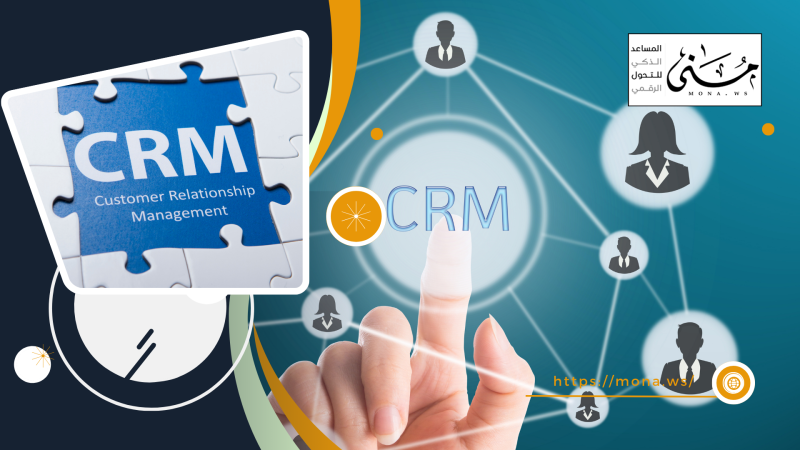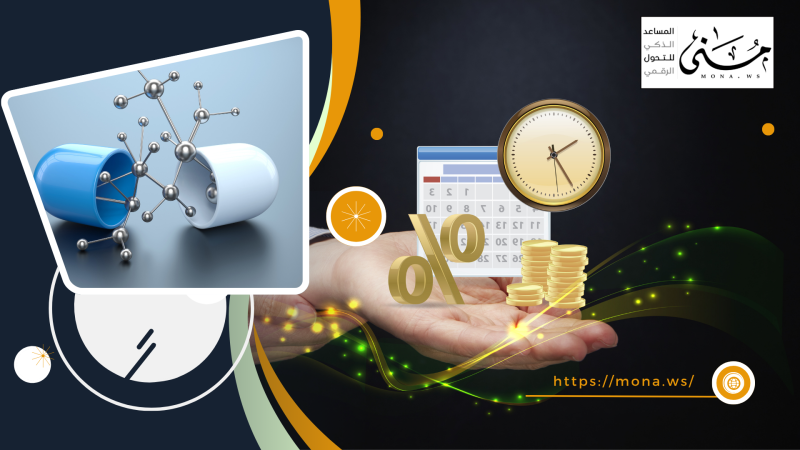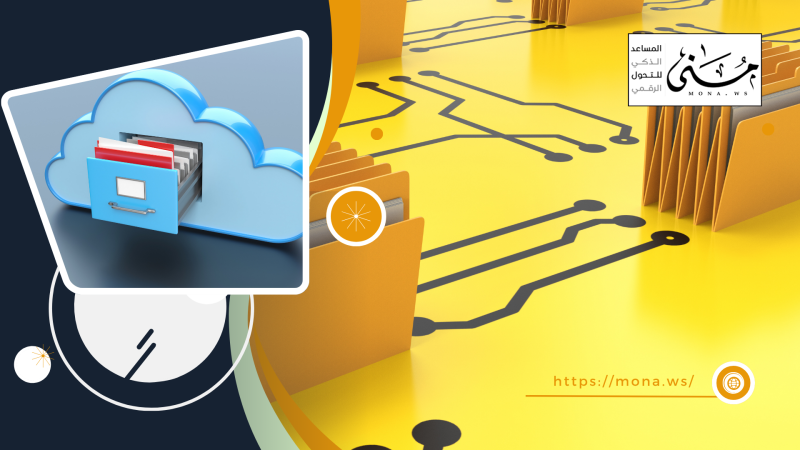Is maintenance and reporting management merely a routine activity in the background of operational processes? Or is it a pivotal element that determines a facility's efficiency and sustainability? The answer may seem obvious at first glance, but the practical reality within industrial and administrative facilities reveals surprises that many are unaware of .
In a world where the pace of work is accelerating, sudden breakdowns and outages are no longer just a temporary annoyance; they have become serious indicators of a deeper flaw in the operating system. This begs the fundamental question: Can maintenance and reporting management make a real difference in an organization's performance?
This article highlights the essential relationship between modern maintenance systems, such as DocSuite CMMS , and increased operational efficiency, not only by addressing faults, but also by anticipating them, analyzing their patterns, and intelligently responding to them. We will explore how these systems contribute to reducing costs, improving the performance of technical teams, and increasing the availability of vital assets .
The answer may surprise you — because smart maintenance is no longer an option, but a strategic necessity .
What is Reporting and Maintenance Management?
Before we explore the impact of reporting management on operational efficiency, it's important to define what is meant by this concept .
Report and maintenance management is the process by which faults or technical requests within an organization are received, documented, analyzed, and addressed.
Types of maintenance:
- Corrective maintenance : intervention after a fault occurs with the aim of repairing it and restoring the asset’s operation .
- Preventive maintenance : It is carried out according to a periodic schedule to reduce the possibility of malfunctions .
- Predictive maintenance : relies on data and analysis to anticipate failures before they occur, reducing unplanned downtime .
In traditional organizations, these processes were managed via phone calls or paper forms, hindering performance tracking and leading to the loss of historical data. Today, however, with the digital transformation, CMMS ( Computerized Maintenance Management Systems ) systems have become essential. Like DocSuite A pivotal tool for managing reports automatically and efficiently .
These systems not only receive reports, but also classify them, link them to relevant equipment and assets, and prioritize them, closely monitoring all processing steps until the report's final closure. Over time, this data becomes a treasure trove of knowledge that can be leveraged to improve the organization's overall performance .
How do frequent breakdowns affect operational efficiency?
Breakdowns are not just occasional incidents or numbers in a technical log. They are a warning bell warning of a deeper flaw that could threaten business continuity and smooth operations. In organizations that fail to take breakdowns seriously and systematically analyze them, minor technical issues can turn into chronic operational crises, negatively impacting the organization's performance across the board .
Production or service discontinuation
Any failure in a vital asset—whether a device, network, or system—causes an immediate or partial halt in operations. For example, in a manufacturing plant, a single machine failure could bring the entire production line to a standstill. In a service organization, a digital system failure could disrupt customer service .
The result? Direct loss of revenue, disruption to workflow, and backlog of tasks, creating an operational gap that is difficult to fill later .
Increased operating costs
When the same faults recur without prompt repair, repair costs increase due to the consumption of spare parts, overtime for technicians, and emergency costs. Furthermore, operating without a preventative maintenance schedule leads to unforeseen expenses on repairs that could have been avoided .
What's worse? These expenses are not clearly recorded unless there is a monitoring and analysis system in place, making the annual budget less transparent and accurate .
erosion of customer or dealer confidence
In a competitive environment, customers and partners do not accept frequent delays or unstable service. When a customer learns that a system is constantly unavailable, or that service suddenly goes down, confidence begins to decline, and they may consider switching to a more stable provider .
Negative impressions spread quickly , affecting the business's reputation and customer loyalty, which is difficult to restore even after the problem is resolved .
Technical teams are exhausted and ineffective.
Technical teams are the first line of defense against breakdowns. But when the work environment turns into a constant emergency, technicians feel exhausted and constantly stressed. Instead of working according to a plan, performance becomes chaotic and reactive, leading to a decline in efficiency, a high rate of human error, and a loss of team spirit .
The lack of analytical data and automated support leaves technicians working in the dark, without knowing the true cause or technical history of the problem .
All of these factors gradually accumulate, weakening an organization's overall performance without being immediately apparent at first. However, using intelligent systems like DocSuite CMMS , this negative pattern can be broken through documentation, analysis, and forecasting, restoring balance to operations and sustainably increasing their efficiency .
From documentation to improvement: How do intelligent systems drive operational efficiency?
As maintenance challenges in modern organizations evolve, it's no longer sufficient to manually or discretely record reports and track failures. What organizations today need is an integrated system that transforms daily data into actionable operational insights. This is where smart systems like DocSuite CMMS come in , revolutionizing the concept of maintenance .
A. Full documentation of each report and malfunction.
The system provides a detailed digital record of each report: from the date of creation, through the reporting entity, the problem classification, to the technical processing details and closure time. This documentation not only ensures transparency, but also provides a knowledge archive that can be accessed at any time and analyzed to make better decisions .
b. Detect patterns and identify recurring faults.
As data accumulates, the system automatically begins analyzing it to detect worrying patterns such as :
- Equipment breaks down at a higher rate than normal .
- Faults that always occur at a certain time or in a specific operating environment .
- Technical teams deal with the same type of faults repeatedly without a permanent solution .
This type of analysis is not easily accessible through traditional methods, but with CMMS systems it becomes available at the push of a button .
C. Moving from reaction to proactivity
One of the greatest benefits of intelligent systems is that they enable an organization to perform predictive maintenance. — Predicting the timing of a failure before it actually occurs, using performance indicators and usage history. This means :
- Reduce unplanned stops .
- Improving the operational readiness of vital equipment .
- Schedule maintenance work at non-critical times to minimize operational impact .
D. Improve time and resource management
The system provides accurate reports on :
- Response time for each report .
- Time taken to repair .
- Number of closed vs. open reports .
- Workload on technical teams .
All these indicators help management allocate human and material resources intelligently , and rationalize operating costs without affecting the quality of service .
The end result? Maintenance is no longer merely an operational activity, but rather a key driver of improving corporate performance , thanks to smart systems that enable managers and technicians to effectively control, manage, and plan .
Technical performance as a strategic indicator of operational efficiency
The performance of technical teams is no longer measured solely by their ability to fix problems. It has become a strategic operational indicator that reflects an organization's resilience and readiness to effectively address technical challenges. With CMMS systems like DocSuite , these indicators have become more visible and analyzable, enabling departments to improve performance based on actual data .
Response time and speed of repair
Response time is the time between when a report is filed and the technical team begins to address it, while repair speed measures the time it takes to fully resolve the issue. Accurately measuring these two indicators reveals the readiness of technical teams and the efficiency of workflow. In a sensitive operational environment, even minutes of delay can result in significant losses, so accelerating the system's response cycle directly contributes to reducing downtime and stabilizing operations .
Fault frequency
It's important not to be fooled by the speed of repair alone. The point isn't to fix a malfunction once, but to ensure it doesn't recur. Recurring malfunctions indicate a fundamental flaw that hasn't been effectively addressed. When a CMMS records repeated malfunctions in the same device or department, it sends an implicit warning that the design, operating procedures, or even the skills of the technical team need to be reevaluated. This pushes the organization toward preventative action rather than temporary patching .
Analysis of task distribution and effectiveness of technical teams
The system's analysis of task allocation reveals the workload balance between technicians and departments. If the data shows that a particular technician is handling twice the number of reports compared to his or her colleagues, this could be an indication of a lack of competencies within the team or operational bottlenecks in certain areas. Comparing average processing times among technicians also helps identify individual differences that require additional training or team reorganization to improve overall performance .
Linking technical performance to operational outputs
When technical performance indicators are viewed in isolation from other organizational indicators, they lose much of their value. However, when linked to production levels, service quality, or customer satisfaction, they become strategic tools for making vital decisions. For example, a high repair time in a particular department might explain a production delay, or customer complaints about delayed service. The system automatically links these indicators, enabling management to directly and practically see the relationship between maintenance and operational efficiency .
Maintenance management is not operational support... but an integrated operating strategy.
Maintenance management is often viewed as a support function, only stepping in when a breakdown occurs. However, this concept has become obsolete in modern business environments that rely on proactive, analytical, and digital integration . Today, maintenance has become the cornerstone of stabilizing operational systems, ensuring asset availability, and sustainably reducing operational costs .
Maintenance is central to the sustainability of operations.
In any facility that relies on operational assets—from industrial equipment to technical infrastructure—continuous and preventive maintenance is the backbone of business continuity. When managed strategically, maintenance :
- Reduces sudden stop rates,
- Extends the operating life of equipment,
- And maintains the efficiency of operational performance at its peak .
The absence of preventive maintenance, or its implementation in an irregular manner, leads to a gradual erosion in performance and a loss of the ability to predict failure dates, exposing the organization to high operational and financial risks .
Data-driven operational perspective
Smart systems like DocSuite CMMS Maintenance is transformed from a random activity into a real-data-driven process. The system generates comprehensive reports on :
- Causes of malfunctions,
- Frequency of problems,
- The most affected areas or equipment,
- Accumulated cost of repair versus replacement .
This perspective reshapes management thinking from "How do we fix the problem?" to "How do we prevent it from happening?" It also allows for long-term strategic planning, whether in allocating budgets, updating assets, or developing technical team capabilities based on actual weaknesses .
Integration with other business units
Maintenance cannot succeed effectively if it is isolated from other departments. For example :
- Inventory management should be aware of the maintenance supplies and spare parts required .
- Operations management must coordinate maintenance schedules with production or operating schedules to avoid conflicts .
- Quality management requires equipment maintenance records within audit and compliance standards .
Systems such as DocSuite This integration is facilitated by a unified platform that links different modules, enhancing the flow of information, eliminating duplication, and preventing conflicting decisions.
From troubleshooting to improving corporate performance
Maintenance no longer means just fixing what's broken, but has become part of improving overall performance. For example :
- By tracking and analyzing faults, the operational process design can be modified to reduce stress on the equipment .
- Thanks to periodic reports, management can improve operational policies and increase productivity .
- Smart maintenance contributes to maintaining safety standards, reducing accidents and increasing the reliability of the work environment .
- It also supports compliance with local and international standards, especially in regulated sectors such as energy and healthcare .
When maintenance is understood in this way, it transforms from an operational burden into a strategic lever that ensures organizational excellence, supports confident expansion, and provides a stable operating environment over the long term .
When we began this article with the question , " Is maintenance and reporting management related to operational efficiency? " the answer may have seemed unclear or even surprising to some. However, after examining the precise relationship between breakdowns, response time, technical performance analysis, and integration with other business units, it became clear that maintenance is not merely a support activity... but rather a strategic tool for managing operational efficiency .
Systems like DocSuite CMMS It not only provides solutions for recording failures, but also enables organizations to see the whole picture: from occurrence to cause, from fix to improvement, from reaction to proactive planning. The ability to use this data in decision-making is not a technical luxury; it is essential for survival and development in a business environment that demands the utmost efficiency and preparedness .
Therefore, the real question is no longer : Does maintenance impact operational efficiency?
Rather, it's : To what extent can your organization improve its performance through smart, digitally managed maintenance?
The opportunity is in front of you... and the decision is in your hands .










Comments
Add New Comment